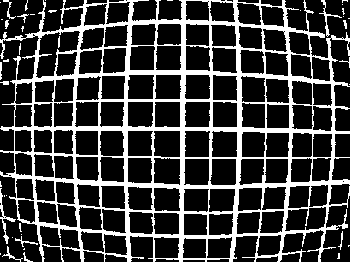When it comes to selecting SLR equipment, one needs to pay acute attention to lenses rather than camera bodies. Camera bodies are much easier to compare and judge than camera lenses. To start with, we have multiple lenses in a manufacturer's stable which look alike. For example, you'd often find two zoom lenses with the same focal range but with one or two other characters in its name differing - let's suppose an 18-55 VRII and an 18-55 D(these are hypothetical offerings and may not actually exist). To add to the buyer's miseries there are third party manufacturers like Sigma, Tamron who also have their league of lenses which look similar in nomenclature and confuse the already nervous buyer. People often ask me or quiz the retail shop guy "why is this 18-55 lens by ABC thrice as expensive as the other 18-55 lens by the same manufacturer" and the quizee goes "its made of better material...its simply better". I'd say dumb retailer but would you like it if he hurled a barrage of jargon in your face and made you look like a dumb camera aficionado in front of the other customers? It's wise to just lie down and take such answers once in a while :)
In this post, I will pour out whatever little I know about how 2 differently priced seeming-twin lenses could actually be different so as to justify the discrimination in price between them.
How a lens works
A camera lens has an array of optical lenses (you learnt about convex and concave lenses in school right?). The job of this lens arrangement is to focus the incoming rays accurately on the sensor. The accuracy of the lens greatly depends on the architecture(arrangement) of these lens elements and the materials that go into making these lenses.
 |
| Image Courtesy: cambridgecolor.com |
~ Building blocks: More than often, the price difference is due to the materials that are used to make these lens elements. For example, Nikon has this new technology that it has named "Nano Crystal Coating". I heard about this lens at a conference where one photographer thumped his chest and said "I finally bought a nano-coating wala lens" and all heads turned. By the time I turned around to see what the hulla was about, everyone had already prostrated in the direction of the now unanimously hailed sartaj amongst them :) Nano coating is some revolutionary low-refraction coating applied to lenses which reduces lens flare. So if you are shooting bright lights(like a street lamp or an oncoming car with headlights on) with such a lens, the glare cause by the bright light source will be quite reduced. This also reduces lens flares as shown in the below image. I borrowed it from Nikon's website which explains the Nano Coating funda. You can read up on it here. So if your lens has such a revolutionary coating, you can expect a pinch to your wallet.
 |
| Image Courtesy: Nikon.com |
~ Image Stabilization: I have spoken at length about this feature in another post so I'll just mention that Canon uses the term IS (Image Stabilization) in its lens nomenclature while Nikon uses VR (Vibration Reduction). So if the lens is called 18-55 VR it means it has image stabilization mechanism in it and hence is higher priced as compared to a non-VR lens.
~ Chromatic Aberration & other cool/unwanted features: This is incorrect reproduction of colors due to the inability of the lens to focus incoming rays accurately on the sensor. Some lenses show obvious chromatic aberration in cases of high contrast or excessive brightness. Check out the below images. The one of the left is the one without chromatic aberration while the other has it. Do you notice the red border around the eagle's head? That is chromatic aberration.
 |
| Image Courtesy: cambridgecolor.com |
Other problems that your lens can introduce you to are distortion,
vignetting. Distortion is where the image does not seem to have been
laid down on a flat pane. The below image is highly distorted - notice that the lines are not straight all through the image. The image has a bulging feel to it.
 |
| Image Courtesy: andrewwoods3d.com |
Vignetting is the gradual darkening/brightening of the image around the corners. It is said that almost all lenses introduce vignetting to some degree though Nikon claims that one of its fisheye lenses (can't recollect which one) has no vignetting at all. The below image illustrates this effect.
 |
| Image Courtesy: wikimedia.com |
So when a reviewer or a retailer labels a lens as a low-quality lens, it could be plagued by one or all of the above problems.
~ Lens speed: another very commonly used term to classify lenses is "fast lens". This simply means that the lens can take pictures at higher shutter speed owing to its wider maximum aperture. For example, an 35mm f1.8 lens would be a faster lens as compared to an 85mm f3.5 lens since at f1.8 the lens is wider than it is at f3.5 and hence takes in more light and you can click an image of the same brightness with higher shutter speed or lower ISO.
~ Constant aperture: zoom lenses usually have a range of f values that it shuttles between as you zoom in/out the lens. The f-value of a lens is calculated by the below equation
In the cheaper lenses, the actual aperture of the lens diaphragm does not change as you change the focal length (by zooming in/out). As such, as you zoom in the f-value keeps increasing due to the above equation. Take the 18-200 f3.5-5.6 lens for example in the Nikon stable. If you set the aperture to 3.5 at 18mm zoom, as you keep zooming in towards 200mm, the aperture value keeps moving towards 5.6. So you can't achieve a f3.5 aperture at let's say 50mm or anything above it. Now there's no need to panic - there are special lenses made for perfectionists who will not bow down to this architectural flaw. These lenses achieve fixed aperture values because the lens adjusts the actual aperture as you change the focal length. For example, a 12-24mm f4.0 Nikon lens will not change its aperture come what may. Rejoice! But it will cost ya! :)
f-value = focal length (mm) / actual lens aperture
There are other premium features like Canon's USM (ultra sonic motor) which produces very low sounds during operation. Such lenses are suited for wildlife photography where animals can get spooked by strange noises.
So you can see that to judge the correct pricing of a lens, one needs to be in the know of the above and many more paradigms that plague photography equipment and need you, the buyer, to either compromise and settle for low-performance options or to shell out the extra buck for improved performance.
So you can see that to judge the correct pricing of a lens, one needs to be in the know of the above and many more paradigms that plague photography equipment and need you, the buyer, to either compromise and settle for low-performance options or to shell out the extra buck for improved performance.
No comments:
Post a Comment